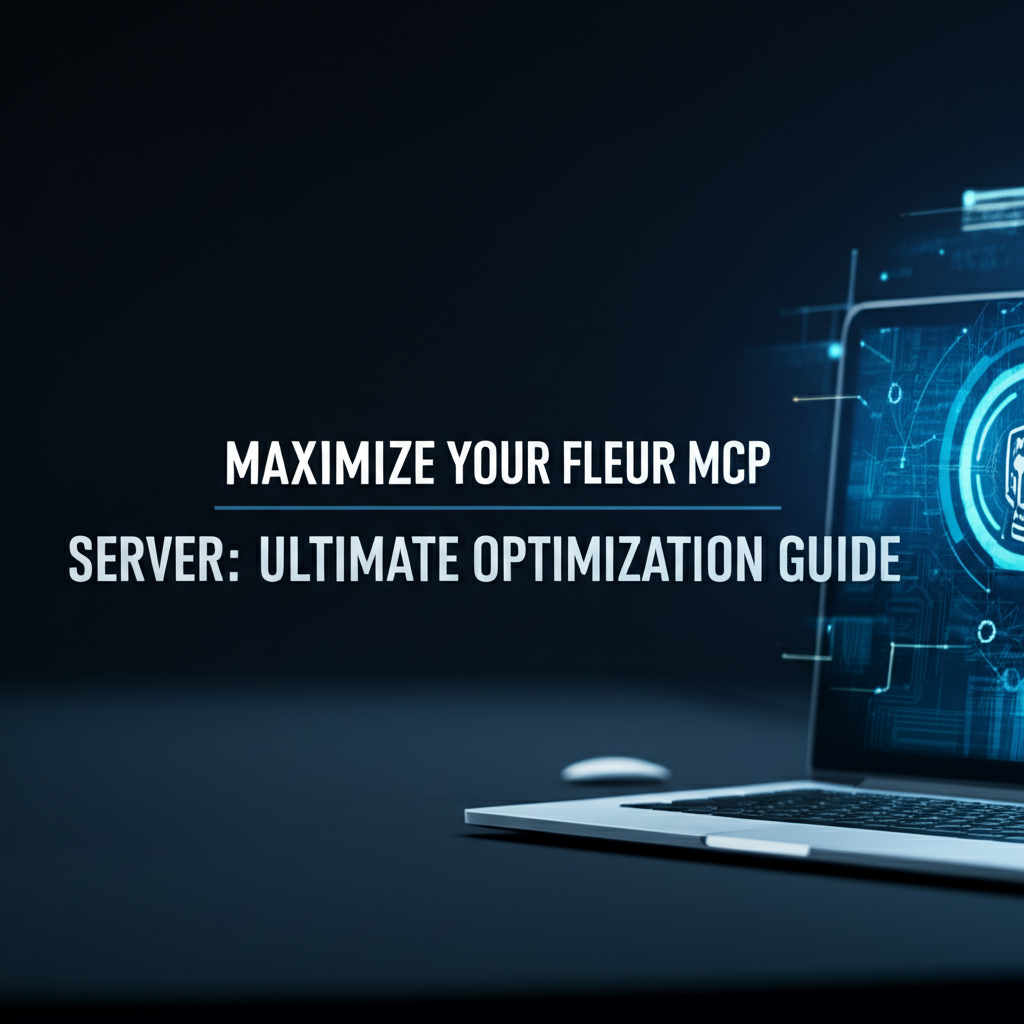Maximize Your Fleur MCP Server: Ultimate Optimization Guide

Build AI Agents With Incredible MCP
Introduction
In the ever-evolving landscape of data integration and management, the Model Context Protocol (MCP) has emerged as a game-changer for businesses seeking seamless and efficient connectivity between their systems. At the heart of this transformation lies the Fleur MCP Server, a robust API integration platform designed to facilitate rapid and cost-effective data exchange. This comprehensive guide will delve into the intricacies of optimizing your Fleur MCP Server, ensuring that you harness its full potential to streamline operations and enhance productivity.
Understanding the Fleur MCP Server
What is the Fleur MCP Server?
The Fleur MCP Server is an advanced platform that enables organizations to connect with thousands of real-world data sources and tools in under a minute. By leveraging the Model Context Protocol, Fleur MCP Server simplifies the process of integrating diverse data sources, reducing the complexity and time traditionally associated with data integration projects.
Key Features of Fleur MCP Server
- Rapid Integration: Connect to multiple data sources with minimal configuration.
- Scalability: Scale your data integration capabilities as your business grows.
- Cost-Effectiveness: Reduce the costs associated with manual data integration.
- User Experience: Deliver a superior experience with minimal configuration and maintenance.
Planning Your Fleur MCP Server Implementation
Step 1: Assess Your Data Integration Needs
Before deploying the Fleur MCP Server, it is crucial to understand your organization's data integration requirements. This involves identifying the data sources you need to connect, the frequency of data exchange, and the types of data you want to integrate.
Step 2: Choose the Right Data Sources
Selecting the appropriate data sources is critical to the success of your Fleur MCP Server implementation. Consider the following factors:
- Data Quality: Ensure that the data sources provide accurate and reliable information.
- Data Security: Choose data sources that adhere to industry-standard security protocols.
- Data Accessibility: Verify that the data sources are accessible and compatible with the Fleur MCP Server.
Step 3: Plan Your Data Flow
Mapping out your data flow is essential for optimizing the performance of your Fleur MCP Server. This involves defining the data transformation processes, data storage requirements, and data delivery mechanisms.
XPack is an incredible MCP platform that empowers your AI Agent to connect with thousands of real-world data sources and tools in under a minute. Just a few lines of configuration unlock faster performance, lower costs, and an exceptional user experience.Try XPack now! 👇👇👇
Optimizing Your Fleur MCP Server
Performance Optimization
- Resource Allocation: Allocate sufficient resources to handle the expected data volume and throughput.
- Caching: Implement caching to reduce the load on the data sources and improve response times.
- Load Balancing: Use load balancing to distribute the data processing workload across multiple servers.
Security Optimization
- Encryption: Use encryption to protect sensitive data during transmission and storage.
- Access Control: Implement strict access control measures to prevent unauthorized access to the Fleur MCP Server.
- Monitoring: Regularly monitor the Fleur MCP Server for potential security threats.
Scalability Optimization
- Horizontal Scaling: Add more servers to the Fleur MCP Server cluster to handle increased data volume.
- Vertical Scaling: Upgrade the existing servers with more powerful hardware to handle increased data processing demands.
- Auto-Scaling: Implement auto-scaling to automatically adjust the number of servers based on the current workload.
Case Study: Optimizing Data Integration with Fleur MCP Server
Let's consider the case of a global e-commerce company that faced challenges with integrating data from various suppliers and partners. By deploying the Fleur MCP Server, the company was able to streamline its data integration process, resulting in the following benefits:
- Reduced Integration Time: The company experienced a 50% reduction in data integration time.
- Improved Data Quality: The implementation of data validation rules improved the quality of the integrated data.
- Cost Savings: The company saved 30% on data integration costs.
Integrating with External Systems
API Integration
The Fleur MCP Server supports a wide range of APIs, allowing you to integrate with external systems and services. To optimize this process, follow these steps:
- API Documentation: Familiarize yourself with the API documentation provided by the external system.
- API Key Management: Store and manage your API keys securely.
- Error Handling: Implement error handling to gracefully handle API errors.
Middleware Integration
In addition to API integration, the Fleur MCP Server can be integrated with various middleware solutions to facilitate data exchange between different systems. Consider the following aspects:
- Middleware Compatibility: Ensure that the middleware solution is compatible with the Fleur MCP Server.
- Middleware Configuration: Configure the middleware to work seamlessly with the Fleur MCP Server.
- Middleware Monitoring: Regularly monitor the middleware to identify and resolve any issues.
Conclusion
Optimizing your Fleur MCP Server is a critical step towards achieving seamless and efficient data integration. By following the guidelines outlined in this guide, you can ensure that your Fleur MCP Server is performing at its best, enabling your organization to leverage the full potential of the Model Context Protocol.
FAQ
Q1: What is the Model Context Protocol (MCP)?
A1: The Model Context Protocol (MCP) is a protocol designed to facilitate rapid and efficient data integration between various systems and data sources.
Q2: How does the Fleur MCP Server differ from other API integration platforms?
A2: The Fleur MCP Server stands out due to its rapid integration capabilities, scalability, cost-effectiveness, and superior user experience with minimal configuration.
Q3: What are the key considerations for planning a Fleur MCP Server implementation?
A3: Key considerations include assessing your data integration needs, choosing the right data sources, and planning your data flow.
Q4: How can I optimize the performance of my Fleur MCP Server?
A4: You can optimize performance by allocating sufficient resources, implementing caching and load balancing, and ensuring proper resource allocation.
Q5: Can the Fleur MCP Server be integrated with external systems?
A5: Yes, the Fleur MCP Server supports integration with external systems through APIs and middleware solutions. Ensure compatibility and proper configuration for seamless integration.
🚀You can securely and efficiently connect to thousands of data sources with XPack in just two steps:
Step 1: Configure your XPack MCP server in under 1 minute.
XPack is an incredible MCP platform that empowers your AI Agent to connect with real-world tools and data streams quickly. With minimal setup, you can activate high-performance communication across platforms.
Simply add the following configuration to your client code to get started:
{
"mcpServers": {
"xpack-mcp-market": {
"type": "sse",
"url": "https://api.xpack.ai/v1/mcp?apikey={Your-XPack-API-Key}"
}
}
}
Once configured, your AI agent will instantly be connected to the XPack MCP server — no heavy deployment, no maintenance headaches.

Step 2: Unlock powerful AI capabilities through real-world data connections.
Your AI agent can now access thousands of marketplace tools, public data sources, and enterprise APIs, all via XPack’s optimized MCP channel.

